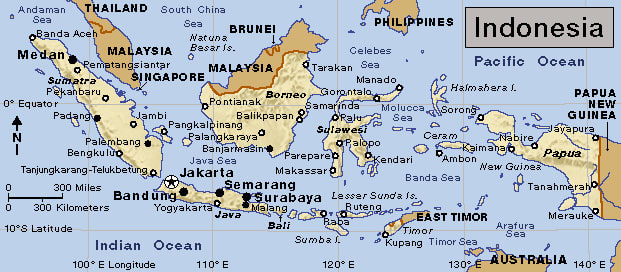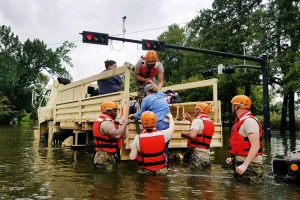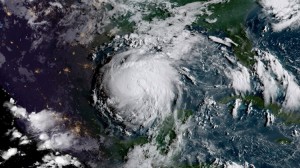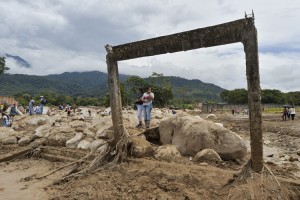The Temblors of Lombok
Friday, August 10th, 2018August 10, 2018
Early on July 29 in southern Indonesia (July 28 in the United States), a 6.4-magnitude earthquake destroyed buildings and killed 17 people on the small island of Lombok. As bad as that was, it proved to be only a warning shot. A week later, on the evening of August 5, a second, stronger earthquake struck the island, and this one, a 6.9-magnitude temblor, proved to be much more destructive. The earthquake collapsed numerous buildings already weakened by the earlier quake, and thus far the dead bodies of 259 people have been pulled from the rubble. Thousands of people have been injured in the disaster, and tens of thousands more have been left homeless.

A man searches through the ruins of houses in Pemenang village in northern Lombok on Aug. 7, 2018, two days after a powerful earthquake devastated the area. Credit: © Sonny Tumbelaka, AFP/Getty Images
Lombok is a lovely tropical island popular with tourists. Only about 40 miles (60 kilometers) across, Lombok sits between the islands of Bali and Sumbawa among Indonesia’s Lesser Sunda Islands. More than 3 million people live on Lombok, and tens of thousands of tourists visit the island every year. Lombok has beautiful beaches, highland forests, and a mountainous interior dominated by Mount Rinjani, an active volcano. Lombok lies at the junction of tectonic plates, however, making it prone to earthquakes. Much of Indonesia sits on the infamous Ring of Fire, a turbulent zone of frequent seismic and volcanic activity along the islands and continents rimming the Pacific Ocean.

Click to view larger image
Lombok lies just east of Bali in the Lesser Sunda Islands of southern Indonesia. Credit: WORLD BOOK map
On July 29, the 6.4-magnitude earthquake struck Lombok’s northern coast near Mount Rinjani. The earth shook violently near the epicenter for more than 10 seconds, knocking buildings to the ground and causing landslides along the slopes of the volcano. Seventeen people died in the earthquake, and hundreds of hikers were briefly stranded in Mount Rinjani National Park. Some 1,000 buildings were damaged or destroyed.
On August 5, as people were still cleaning up from the earlier earthquake, the 6.9-magnitude temblor hit in almost the exact same location. Structures collapsed throughout the island, including in the provincial capital of Mataram near Lombok’s west coast. Terrified people fled to soundly built mosques as aftershocks continued, and a tsunami warning caused panic in low-lying coastal areas. No tsunami occurred, but damage from the earthquake was significant. More than 40,000 buildings were damaged or destroyed on Lombok (including several mosques), electric power and communications systems were knocked out, and three bridges collapsed. The death toll stands at 259, but many people remain missing, so that number will almost certainly rise.
Hundreds of aftershocks have since shaken Lombok, the strongest of which, a 5.9-magnitude temblor, hit early on August 9 (August 8 in the United States), causing still more damage and further frightening the population.
The more than 150,000 people left homeless by the earthquakes are now in need of shelter, food, clean water, and medical supplies, but aid is pouring in from elsewhere in Indonesia and from around the world. Several thousand tourists were forced to evacuate resorts and hotels and leave the island. The Lombok temblor was the deadliest to hit the Lesser Sunda Islands since December 1992, when an earthquake and tsunami killed more than 2,000 people on Flores island east of Sumbawa.





